Greetings, avid travelers and adventurists! If you have a penchant for scenic beauty, rich history, and vibrant cultures, then Nepal should undoubtedly be on your bucket list. Nestled in the lap of the Himalayas, this little gem of a country offers an array of experiences, ranging from trekking up to Mount Everest Base Camp to finding tranquillity in the monasteries of Lumbini, the birthplace of Buddha.
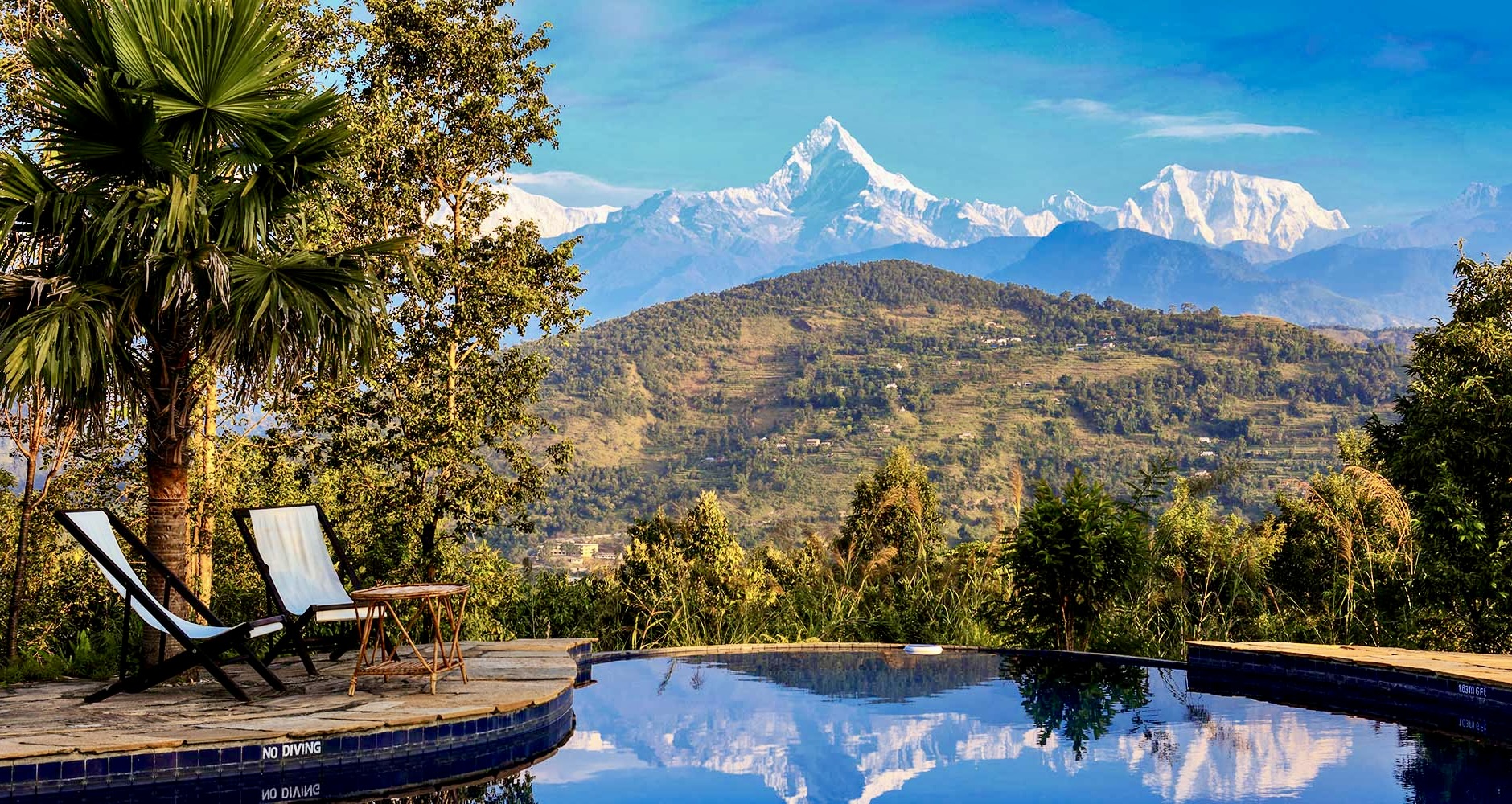
Here, we'll guide you step-by-step on how to book a Nepal tour with a flight from the United States of America. So buckle up and get ready for an unforgettable journey.
Step 1: Decide on Your Perfect Itinerary
Deciding on your perfect itinerary for your Nepal trip from the United States should ideally be based on your interests, the duration of your stay, and the season of your visit. The diverse attractions in Nepal make it a destination for all types of travelers. Here are a few itinerary suggestions for you:
For Cultural Explorers
If you are fascinated by history, religion, and culture, your itinerary should include:
- Kathmandu Valley: Spend at least two days exploring the UNESCO World Heritage Sites, which include the Durbar Squares of Kathmandu, Patan, and Bhaktapur, along with the sacred Hindu temple of Pashupatinath, and Buddhist shrines like Swayambhunath and Boudhanath.
- Lumbini: Dedicate a day to visit Lumbini, the birthplace of Buddha. This pilgrimage site holds great significance for Buddhists around the world.
- Pokhara: Known as the "City of Lakes", Pokhara offers a mix of adventure and tranquility. It’s worth spending a couple of days enjoying boating on Phewa Lake, visiting the Tal Barahi Temple located in the center of the lake, and exploring the local culture.
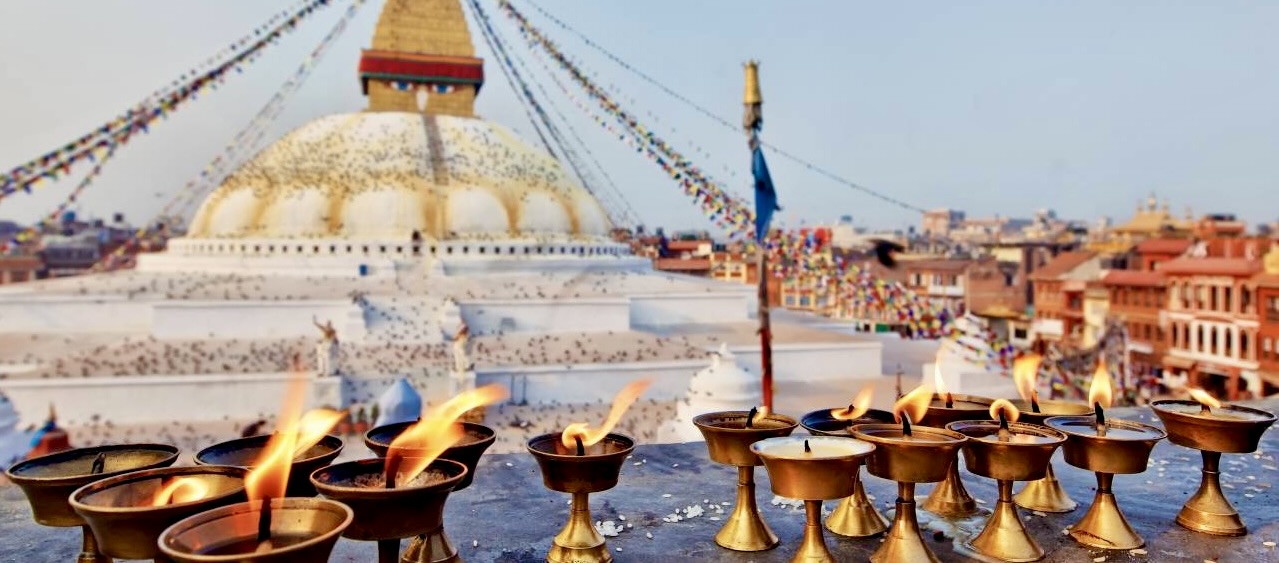
For Adventure Seekers
If you're an adrenaline junkie and love trekking, your itinerary can include:
- Everest Base Camp Trek: This 12-14 days trek takes you to the base of the world's tallest peak, Mount Everest. It’s a challenging trek that offers rewarding views of the Himalayan range. Ensure you have enough days and you are adequately prepared physically for this trek.
- Annapurna Circuit Trek: Another popular trek, this can take anywhere between 10 to 20 days, depending on the route you choose. It's a slightly less demanding trek compared to the Everest Base Camp but equally beautiful.
- Pokhara: Besides being a cultural hub, Pokhara is also known as the "Adventure Capital of Nepal". Try out paragliding, zip-lining, or white-water rafting here.
.jpeg)
For Nature and Wildlife Lovers
If you're a nature enthusiast, your itinerary should include:
- Chitwan National Park: Spend 2-3 days in Chitwan, enjoying jungle safaris where you can spot a variety of wildlife, including Bengal tigers, one-horned rhinos, and numerous species of birds.
- Bardia National Park: For those seeking an off-the-beaten-path experience, Bardia is an ideal choice. It's less crowded than Chitwan but equally rich in wildlife.

Remember, these are just suggestions, and your itinerary should reflect your personal interests and preferences. Whether you're seeking culture, adventure, or nature, Nepal has something for everyone.
Step 2: Choose a Travel Agency or DIY
Deciding between organizing your trip independently (Do-It-Yourself or DIY) and choosing a travel agency like Luxury Holidays Nepal Pvt. Ltd. really comes down to your personal preference, travel experience, and how much time and effort you're willing to put into the planning process. Here's a breakdown of the two options:
Do-It-Yourself (DIY)
Organizing your trip independently allows for a lot of flexibility. You can decide when to go, where to stay, which places to visit, and at what pace. However, planning a DIY trip requires a significant investment of time and effort. It involves researching and booking international and domestic flights, accommodations, local transportation, permits, and local guides if you plan on trekking.
Especially in a country like Nepal, where language can sometimes be a barrier and the local transport system can be difficult to navigate, planning a DIY trip can be quite challenging.
Luxury Holidays Nepal Pvt. Ltd.
Luxury Holidays Nepal Pvt. Ltd. is one of the reputed travel agencies in Nepal known for its comprehensive and well-organized tours. They offer a variety of packages ranging from cultural tours to thrilling adventure treks.
Choosing a travel agency like Luxury Holidays Nepal Pvt. Ltd. can be beneficial for several reasons:
- Efficiency: They handle all the planning and logistics, such as transportation, accommodations, permits, and even meals. This means you can focus more on enjoying your vacation and less on the details of planning.
- Experience: With local knowledge and years of experience in arranging tours, they can provide insight and recommendations that you might not find on your own. They can guide you to less-visited spots, ensuring you have a unique and authentic experience.
- Safety: When you're trekking in the Himalayas or exploring remote parts of the country, safety becomes paramount.
The decision between DIY and a travel agency boils down to personal choice. If you want flexibility and are ready to put in the effort, a DIY trip might suit you. If you prefer having everything planned out and value the support and safety offered by a travel agency, going with a company like Luxury Holidays Nepal Pvt. Ltd. could be a perfect choice.
Step 3: Booking Your Flight
Once you've planned your itinerary and decided whether to go with us, the next step is booking your flight from the United States to Nepal. Here's a step-by-step guide to making that process as smooth as possible:
Determine Your Departure and Arrival Cities
Your starting point in the USA will likely be one of the major international airports such as JFK in New York, LAX in Los Angeles, or ATL in Atlanta. The main and only international airport in Nepal is Tribhuvan International Airport, located in Kathmandu.
Choose the Best Time to Fly
Nepal has four main seasons, and the best time to visit depends on your planned activities. For trekking, the pre-monsoon (February to April) and post-monsoon (September to November) periods are best. For cultural sightseeing, you can visit any time of the year, although the monsoon season (June to August) can be a bit challenging due to the rains.
Compare Airlines and Prices
No airlines currently offer direct flights from the USA to Nepal, so you will have at least one stopover. Common airlines that fly to Kathmandu with one-stop include Qatar Airways, Turkish Airlines, and Emirates, with layovers usually in Doha, Istanbul, and Dubai, respectively.
When comparing flights, consider factors such as total travel time, the length of the layover, and baggage allowances, in addition to the ticket price. Use flight comparison websites like Skyscanner, Expedia, or Google Flights to find the best deals and schedules.
Book Your Flight
Once you've found a flight that suits your needs, go ahead and book it. Make sure all your details are correct, especially your name, as it needs to match the one on your passport. After booking, you should receive an email confirmation with your e-ticket.
Check Flight Details Closer to Departure
Flight schedules can change, so it's essential to reconfirm your flight details a few days before your departure. Check your airline's baggage policies and the items they allow in both checked and carry-on luggage.
Remember, it's always good to arrive at the airport at least three hours before an international flight. Safe travels on your journey to the incredible country of Nepal!
Step 4: Prepping for the Trip
Preparing for your trip to Nepal is a crucial step in ensuring a smooth and enjoyable travel experience. Here's a checklist of things you need to consider before embarking on your journey:
Visa and Passport Requirements
U.S. citizens require a visa to enter Nepal, but it can be obtained upon arrival at Kathmandu's Tribhuvan International Airport. However, it's always best to check the latest visa regulations through the Embassy of Nepal. Make sure your passport is valid for at least six months from your planned entry date into Nepal.
Health and Safety
Consult your doctor or a travel health clinic about necessary vaccinations for travel to Nepal. As of my knowledge cutoff, Hepatitis A, Hepatitis B, Typhoid, Yellow Fever, Japanese Encephalitis, Rabies, Meningitis, Polio, Measles, Mumps and Rubella (MMR), Tdap (Tetanus, Diphtheria and Pertussis), Chickenpox, Shingles, Pneumonia, and Influenza vaccines are recommended. Always check with the CDC or a healthcare provider for the most up-to-date information.
If you're planning a trek, make sure you're physically fit and have had a recent health check-up. Also, learn about altitude sickness and its symptoms, as this can be a risk when trekking in high-altitude areas.
Travel Insurance
Invest in comprehensive travel insurance that covers medical expenses, emergency evacuation, trip cancellation, and loss of luggage or personal belongings. This is especially important if you're planning to do any trekking or other adventurous activities.
Packing Essentials
What you pack will depend largely on the activities you plan to do and the time of year you are visiting. Here are some essentials you should consider:
- Clothing: If you're trekking, pack thermal layers, waterproof jackets, trekking boots, gloves, and hats. If you're visiting cities and towns, comfortable casual clothes are generally acceptable. Remember that Nepal is a conservative country, so it's respectful to avoid overly revealing clothes.
- Medications: Bring any prescribed medications, and it's also handy to have a basic first aid kit. Include medications for common ailments like headaches, colds, and stomach issues.
- Gear: For trekkers, pack items like a sturdy backpack, trekking poles, a water purifier, and possibly a sleeping bag, depending on your trek's accommodation arrangements.
- Electronics: Don't forget your camera to capture the breathtaking views. Also, remember Nepal uses Type C, D, and M outlets, so you might need a universal travel adapter.
Money
While credit and debit cards are accepted in many places in cities like Kathmandu and Pokhara, smaller towns and trekking routes largely operate on cash. Ensure you have access to enough Nepalese Rupees for your journey.
Culture and Etiquette
Learn about the local customs and traditions of Nepal to ensure you respect them during your visit. For instance, it's customary to remove your shoes when entering someone's home or a temple.
Remember, preparation is key to a smooth and enjoyable trip. Once you've ticked off everything on this checklist, you can embark on your journey to Nepal with peace of mind and excitement.
Step 5: Embark on Your Adventure
After all the planning, booking, and prepping, the moment you've been waiting for has finally arrived - it's time to embark on your adventure to Nepal. Here are some tips to ensure a seamless and memorable experience:
At the Airport
Arrive at the airport at least three hours before your departure time for your international flight. Check your luggage, go through security, and relax in the departure lounge until it's time to board. Remember, this is where your journey begins, so soak up the anticipation and excitement.
During the Flight
Long-haul flights can be a challenge, but there are ways to make them more comfortable. Walk around the cabin periodically, stay hydrated, and try to adjust to Nepal's time zone by sleeping and eating according to your destination's clock.
Arrival in Kathmandu
Upon landing at Kathmandu's Tribhuvan International Airport, you'll feel the adventure truly begins. Go through immigration, collect your luggage, and get your visa if you haven't already obtained one.
Exploring Nepal
Now, the real adventure begins. Whether your itinerary includes trekking in the Everest or Annapurna regions, exploring the historic Kathmandu valley, taking wildlife safaris in Chitwan National Park, or immersing yourself in the vibrant culture of Nepali towns and villages, you're in for an unforgettable journey.
Embrace the Unexpected
Part of the thrill of travel is the unexpected. Things may not always go as planned - a flight might be delayed, the weather might change, or a route could be closed. But often, these changes lead to unplanned adventures and experiences that become highlights of your trip. Be flexible, embrace the unexpected, and remember that it's all part of the journey.
Immerse Yourself in the Culture
Nepal is rich in culture and traditions. Take time to interact with the locals, try Nepali cuisine, learn a few words in Nepali, and participate in local traditions if invited. These interactions will provide a deeper understanding and appreciation of the country and its people.
Capture the Moments
Whether through photographs, journaling, or simply taking a moment to soak in your surroundings, remember to capture the beauty of Nepal and the experiences you're having. These will be the lasting memories of your incredible journey.
As you embark on your adventure, keep an open mind and a sense of curiosity. Nepal, with its diverse landscapes, rich culture, and warm people, has countless unique experiences to offer. Enjoy every moment of your journey, and here's to the adventure of a lifetime in the beautiful country of Nepal!
Cost of tour and trek in Nepal, including flights from the United States of America
Flights: Round trip flights from the US to Nepal can range from around $800 to $2,000 USD depending on the time of year, airline, and how far in advance you book.
Trekking: For trekking tours such as the popular Everest Base Camp trek, prices often start around $1,000 USD for budget options and can go up to $3,000 or more for luxury packages. This typically includes accommodation, meals, guide and porter services, permits, and transportation within Nepal, but not international flights.
Other tours: Sightseeing tours, cultural tours, and other non-trekking options can range from $50 a day for budget options up to several hundred dollars a day for luxury or private tours.
Therefore, a rough estimate might be between $2,000 and $6,000 USD for a trekking trip including flights, or somewhat less for a non-trekking tour. However, prices can certainly go higher for more luxurious options or longer trips.
Remember, these prices are just estimates and actual prices can vary greatly. It's also important to factor in other costs such as travel insurance, visas, vaccinations, personal expenses, and tips. For the most accurate information, I recommend contacting us. Be sure to ask what is included in the price of any tour or trek you're considering.
Travel requirements for Americans visiting Nepal
Passport: A passport with at least six months of remaining validity from the planned entry date is necessary for Americans visiting Nepal.
Visa: U.S. citizens need a visa to enter Nepal, but tourist visas are available on arrival at Kathmandu's Tribhuvan International Airport and at land border crossings that are open to foreigners. Visa fees for U.S. citizens
15 days: $30
30 days: $50
90 days: $125
These can be paid in U.S. dollars. Having the exact amount and two passport-sized photos will facilitate the process.
Tourist visas can also be obtained in advance from the Embassy of Nepal or a consulate in the U.S.
COVID-19 Health Guidelines: Due to the ongoing global COVID-19 pandemic, there might be additional health requirements such as presenting a negative COVID-19 test, health declaration forms, or mandatory quarantines upon arrival. It is highly advised to check the latest travel advisories from official health and travel sources.
Travel Insurance: While not a mandatory requirement, it is strongly recommended that U.S. citizens traveling to Nepal have a travel insurance policy that covers emergency medical evacuation and repatriation. This is particularly crucial for travelers planning to undertake activities like trekking, which carry inherent risks.
Vaccinations: As of my last update, there are no compulsory vaccinations required for U.S. citizens entering Nepal, but it is recommended to be up to date with routine vaccinations. Some of the suggested vaccines for travelers to Nepal include Hepatitis A and B, Typhoid, and Yellow Fever. Do check with a healthcare provider for the most current advice.
Remember that while traveling, it's important to respect the local customs and laws of the country. Enjoy your trip to Nepal, a country known for its stunning landscapes and rich culture.
Time takes to fly from the United States to Nepal
The flight time from the United States to Nepal varies based on the city of departure in the U.S. and the specific flight route, which often includes at least one stopover. As there are no direct flights from the U.S. to Kathmandu, Nepal, you will usually have to transit through cities such as Doha, Qatar (Qatar Airways), Istanbul, Turkey (Turkish Airlines), or Dubai, United Arab Emirates (Emirates).
Generally, total travel time from the East Coast of the U.S. (such as New York City) to Kathmandu ranges from around 19 to 22 hours or more, including layovers. From the West Coast (such as Los Angeles), it may take anywhere from about 20 to 24 hours or more, including layovers.
Remember, these are just estimates, and the actual travel time can vary based on many factors, such as the specific flight you book, the length of the layover(s), and potential delays.
Always double-check your flight itinerary before departure to be fully aware of your journey's duration and transit points.
Best time to visit Nepal for American tourists
The best time to visit Nepal largely depends on the activities you're planning to undertake during your visit. Here's a quick guide to help you choose the optimal time based on your preferences:
If you're interested in trekking, the pre-monsoon (spring: February to April) and post-monsoon (autumn: September to November) seasons are the best. These periods offer clear skies and stunning views of the Himalayan range. Among these, the autumn months are the most popular, thanks to the generally stable weather and moderate temperatures. However, be prepared for crowds on popular trekking routes during these periods.
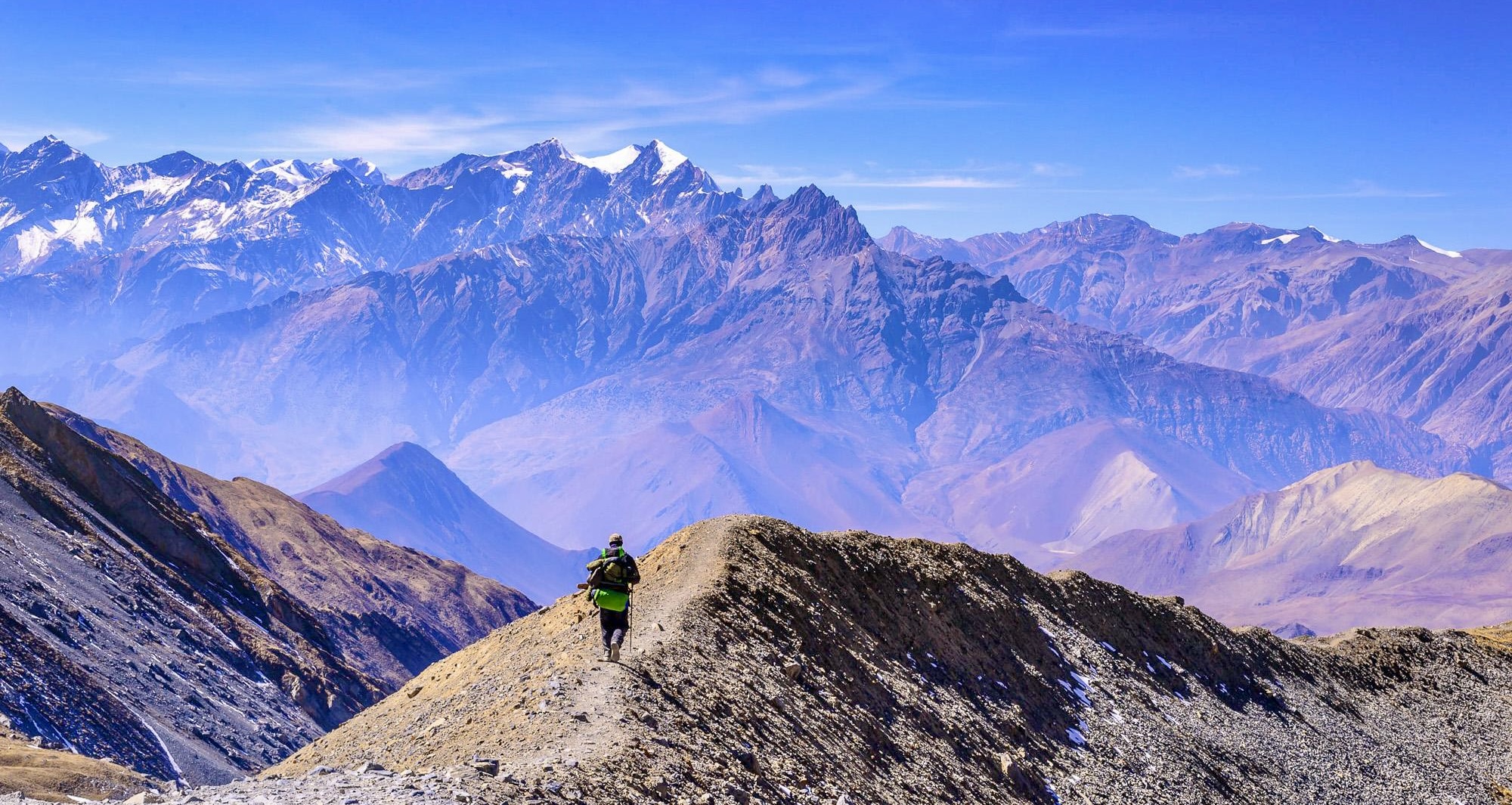
Sightseeing and Cultural Tours
For sightseeing and cultural tours around cities like Kathmandu and Pokhara, or visits to Chitwan National Park for wildlife viewing, the weather is less critical, and you can plan your visit throughout the year. However, the monsoon season (June to August) could be less comfortable due to heavy rains, and some rural roads may become impassable.
Festivals
If you're interested in experiencing Nepal's vibrant festivals, you might want to schedule your visit during one of them. Dashain (usually in October) and Tihar (usually in November) are two of the biggest and most colorful festivals celebrated in Nepal.
Avoiding the Crowds
If you prefer a less crowded experience, consider visiting in the shoulder seasons - late autumn (late November to December) and early spring (late February to March). The weather is generally still favorable for trekking, and there are fewer tourists.
Ultimately, the best time to visit Nepal for American tourists will depend on their individual interests and tolerance for varying weather conditions. Regardless of when you choose to visit, Nepal offers a wealth of experiences year-round.
Popular tourist destinations in Nepal for Americans
Nepal is a treasure trove of natural beauty, rich history, and diverse cultural experiences. Here are some of the most popular tourist destinations in Nepal for American tourists:
Kathmandu Valley
The Kathmandu Valley is home to Nepal's capital, Kathmandu, and other historic cities like Patan and Bhaktapur. The area is filled with UNESCO World Heritage Sites including Durbar Squares, Pashupatinath Temple, Boudhanath Stupa, and Swayambhunath Stupa (also known as the Monkey Temple). Thamel, the tourist hub in Kathmandu, is a great place to shop for local handicrafts, spices, and trekking gear.
Pokhara
Known as the gateway to the Annapurna region, Pokhara offers stunning views of mountains, a serene lakeside setting, and adventure activities like paragliding, zip-lining, and ultra-light flights. The World Peace Pagoda and the International Mountain Museum are must-visits in Pokhara.
Trekking Regions
For outdoor enthusiasts, Nepal offers some of the world's most famous trekking routes. The Everest region for the Everest Base Camp trek, the Annapurna region for the Annapurna Circuit and Base Camp treks, and the Langtang region are popular choices. Other less crowded but equally stunning options include the Manaslu Circuit Trek and treks in the Mustang region.
Chitwan National Park
Located in the Terai lowlands of Nepal, Chitwan National Park is a haven for wildlife enthusiasts. Visitors can spot rhinos, Bengal tigers, and a variety of bird species. Activities include jungle safaris on foot, or via jeeps or canoes.
Lumbini
Recognized as the birthplace of Lord Buddha, Lumbini is a UNESCO World Heritage Site and a significant pilgrimage site for Buddhists worldwide. The peaceful gardens, monasteries, and the Mayadevi Temple marking the exact birthplace of Buddha offer a tranquil experience.

Bandipur
Bandipur is a beautifully preserved hilltop town that offers panoramic views of the Himalayas, a well-preserved old town area, and an opportunity to experience Newari culture.
Remember, the destinations you choose should depend on your interests – whether they lie in culture, history, nature, adventure, spirituality, or wildlife. Regardless of where you choose to go, you're sure to be amazed by the hospitality of the Nepali people and the country's diverse offerings.
Local currency in Nepal and use US dollars
The local currency of Nepal is the Nepalese Rupee, which is abbreviated as NPR. It comes in denominations of 1, 2, 5, 10, 20, 50, 100, 500, and 1000 rupee notes.
U.S. dollars are not widely accepted in day-to-day transactions in Nepal, there are a few exceptions. For instance, in the tourism industry, such as at some hotels, U.S. dollars might be accepted. Additionally, visa fees upon arrival in Nepal can also be paid in U.S. dollars.
However, for everyday transactions such as dining, shopping in local markets, or using local transportation, you will typically need to use Nepalese Rupees. It's advisable to carry some local currency with you at all times for convenience.
Currency can be exchanged at Kathmandu's Tribhuvan International Airport, at banks, or at authorized money exchange services in cities and towns. ATMs are also available in major cities like Kathmandu and Pokhara, where you can withdraw local currency using your international debit or credit card. Be aware that your bank might charge foreign transaction fees for ATM withdrawals.
Always make sure to check the current exchange rates and bank policies before you travel.
Safe for Americans to travel to Nepal
Yes, generally speaking, it's safe for Americans and other foreign nationals to travel to Nepal. The country is known for its friendly and hospitable people, and violent crime is relatively low, especially against tourists. However, as with traveling in any foreign country, it's important to stay aware and take necessary precautions to ensure your safety.
Here are some safety tips for traveling in Nepal:
- Be Alert in Crowded Places: Be careful with your belongings in crowded places like markets or bus stations, where pickpocketing can occasionally occur.
- Road Safety: Road conditions in Nepal can be challenging, with chaotic traffic, poor road conditions in some areas, and minimal enforcement of traffic laws. Be extra cautious if you're driving, and if you're a pedestrian, be aware of the traffic around you.
- Trekking Safety: If you're trekking, go with a reputable guide, acclimatize properly to prevent altitude sickness, stay hydrated, and avoid trekking alone in remote areas. Always inform someone of your trekking plans and expected return date.
- Food and Water Safety: To prevent illnesses, stick to bottled or purified water, avoid ice unless it's made from purified water, and eat well-cooked food.
- Natural Disasters: Nepal is in a seismic zone and experiences occasional earthquakes. Familiarize yourself with safety procedures in the event of an earthquake. During the monsoon season (June to September), there may be landslides in hilly and mountainous areas.
- Travel Insurance: It's highly recommended to have travel insurance that covers medical emergencies and evacuation, especially if you're planning on trekking or doing other adventure activities.
- Respect Local Customs: Nepal is a country with deep-rooted customs and traditions. Always respect local customs, dress modestly, and ask for permission before taking photos of people or religious sites.
Remember, the local U.S. Embassy or Consulate is a good resource if you encounter any serious issues while in Nepal.
Best trekking routes and hiking trails in Nepal for Americans
Nepal, known as the 'Land of the Himalayas', offers some of the best trekking routes in the world. Here are some of the best trails for American tourists:
Everest Base Camp Trek
This iconic trek takes you to the foot of the world's highest peak, Mount Everest. Along the way, you'll pass through Sherpa villages, Buddhist monasteries, and stunning mountain landscapes. The trek typically takes about 12-14 days.

Annapurna Circuit Trek
The Annapurna Circuit Trek is a diverse trek offering a variety of landscapes, from green terraced farmland to arid high mountain pass. The trek also includes the opportunity to experience local culture in mountain villages. The trek usually takes 14-21 days depending on the specific route.
Langtang Valley Trek
Close to Kathmandu, the Langtang Valley Trek offers a quieter experience than the Everest or Annapurna treks. It offers spectacular views of the Langtang Range and takes you through a unique blend of Buddhist and Tamang cultures. This trek can be completed in 7-10 days.
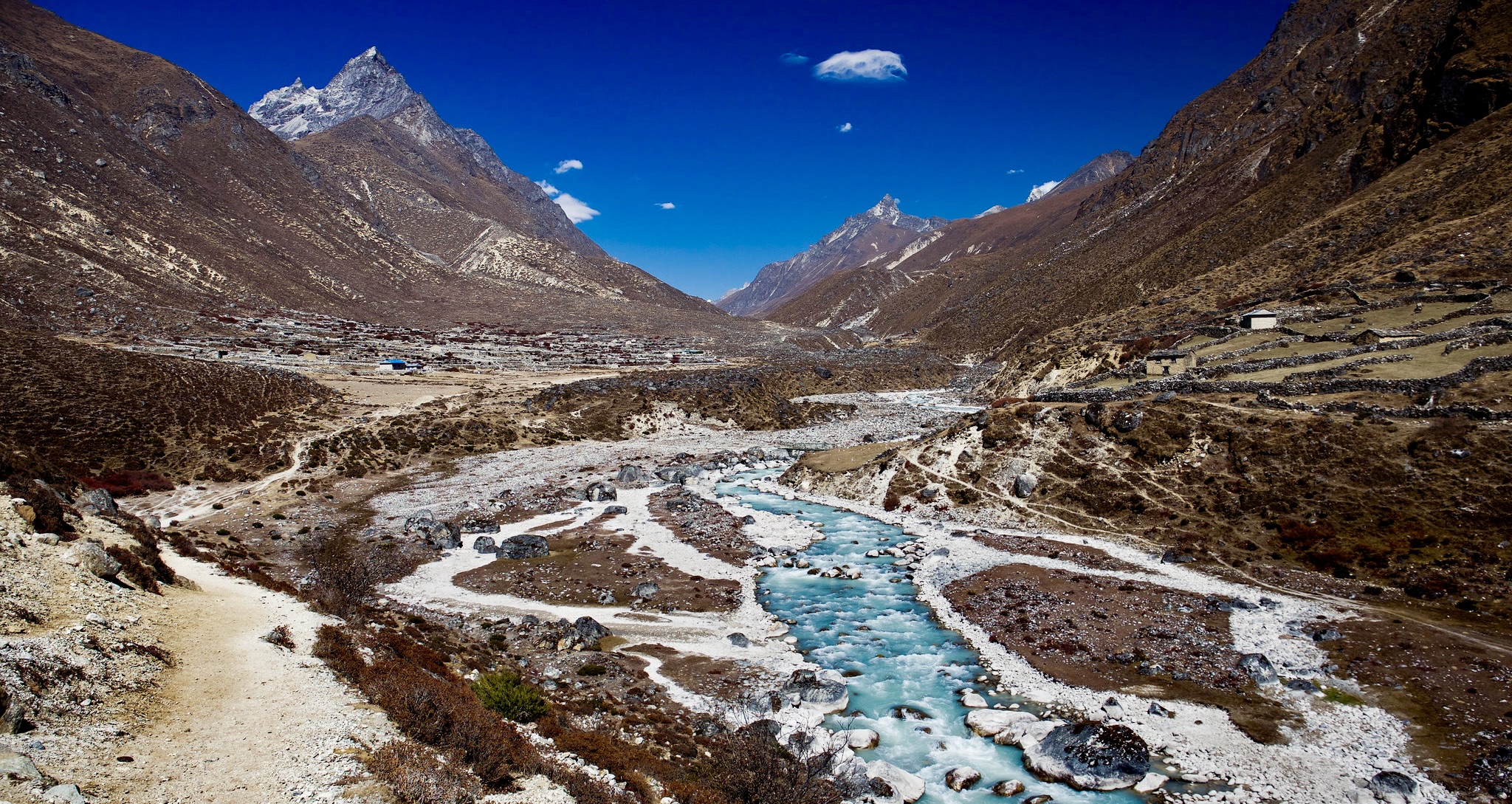
Ghorepani Poon Hill Trek
Ideal for those with limited time or seeking a relatively easy trek, the Ghorepani Poon Hill Trek in the Annapurna region offers beautiful views of the Himalayas, especially from the Poon Hill viewpoint at sunrise. This trek can be completed in 4-5 days.
Manaslu Circuit Trek
A less crowded but equally stunning alternative to the Annapurna Circuit, the Manaslu Circuit Trek takes you around the world's eighth-highest mountain, Manaslu. This trek, which usually takes 14-17 days, offers a mix of cultural heritage, challenging terrain, and incredible mountain vistas.
Gokyo Ri Trek
A less traveled route in the Everest region, the Gokyo Ri Trek takes you to the beautiful Gokyo Lakes and offers spectacular views of Everest and other high mountains from the Gokyo Ri viewpoint. The trek usually takes about 12-14 days.
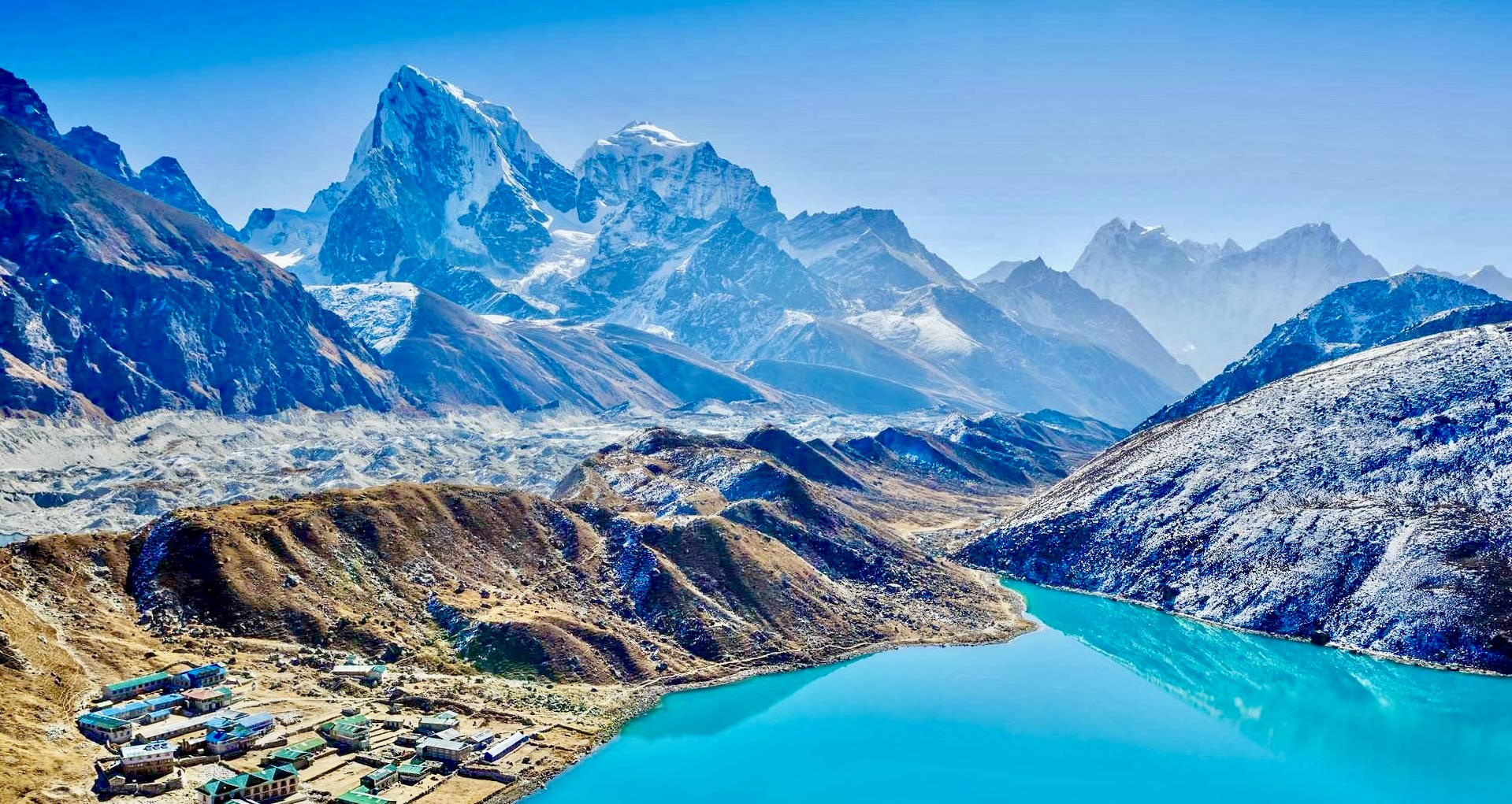
When trekking in Nepal, it's crucial to be aware of altitude sickness and take necessary precautions, including proper acclimatization.
Luxury tour and trek in Nepal for Americans
Luxury tours in Nepal offer a unique blend of adventure and comfort, providing you with the opportunity to experience the country's stunning landscapes, vibrant culture, and rich history while enjoying top-tier accommodations and services. Here are some options for luxury tours and treks in Nepal for American travelers:
Luxury Everest Base Camp Trek
Experience the thrill of trekking to the base camp of the world's highest mountain, while enjoying high-quality service and accommodations. Luxury lodges along the trail provide comfortable beds, hot showers, gourmet meals, and spectacular views. Some packages may even include helicopter rides for part of the trek, reducing the physical demand and offering an incredible aerial view of the Himalayas.

Luxury Annapurna Base Camp Trek
This trek takes you through diverse landscapes, from terraced farmland to rugged mountain terrain, culminating in the Annapurna Base Camp. Luxury lodges en route offer amenities like comfortable rooms, en-suite bathrooms, and dining halls serving a variety of cuisines.
Kathmandu and Pokhara Luxury Tour
Explore the historic sites of Kathmandu and the natural beauty of Pokhara, all while staying in some of Nepal's finest hotels. The tour may include guided tours of UNESCO World Heritage Sites, a private boat ride on Phewa Lake, and an optional flight over the Annapurna mountain range.
Luxury Wildlife Safari in Chitwan National Park
Experience the rich biodiversity of Chitwan National Park while staying in a luxury resort. Activities may include jeep safaris, canoeing, bird-watching, and cultural performances. Resorts offer spacious rooms, excellent service, and exquisite dining experiences.
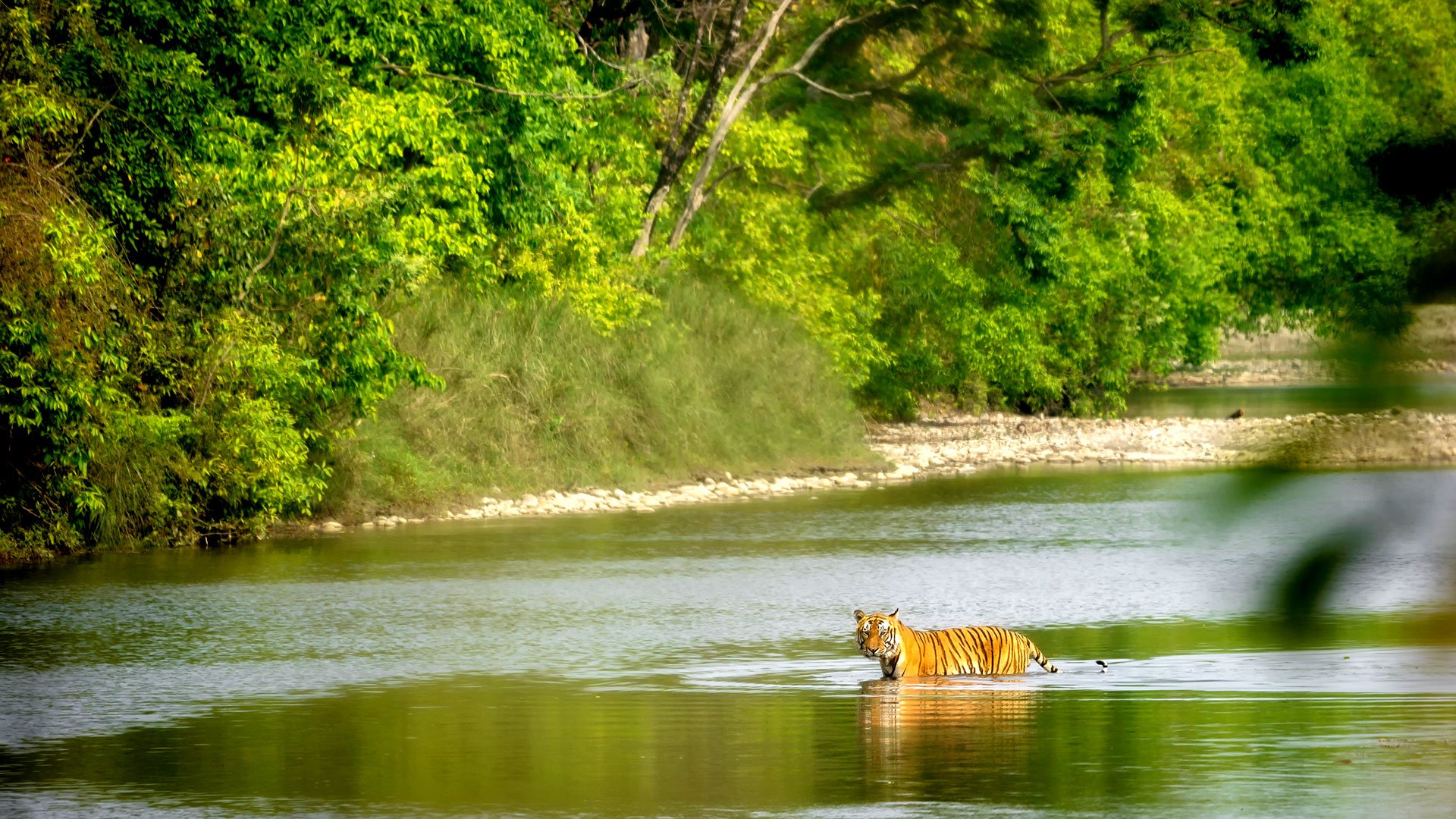
Luxury Cultural Tour in Bhaktapur and Patan
Explore the rich cultural heritage of the Kathmandu Valley, visiting the ancient cities of Bhaktapur and Patan. Stay in boutique hotels and enjoy guided tours of historic sites, private cultural performances, and gourmet dining.
Luxury Helicopter Tours
For those with limited time or those seeking a unique perspective, luxury helicopter tours offer an incredible way to experience Nepal’s mountains. Tours can fly you around Mount Everest or the Annapurna range, land at the base camps, or take you to remote luxury lodges.
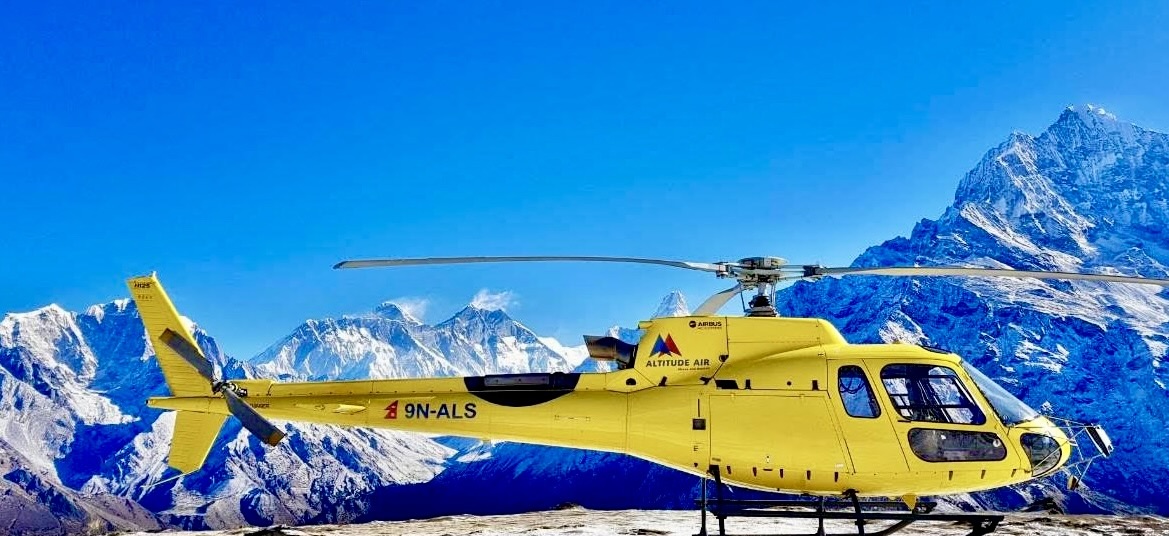
Before you book a luxury tour, make sure to review the itinerary, what's included (such as meals, transportation, guides), and the cancellation policy. Also, check traveler reviews of the tour operator to ensure their services meet your expectations. Regardless of the itinerary you choose, a luxury tour in Nepal is sure to provide an unforgettable experience.
Traveling from the United States to Nepal involves a long flight with at least one stopover, typically in cities like Doha, Dubai, or Istanbul. Upon arrival, visitors will find a country steeped in ancient traditions and natural beauty. Popular activities include trekking in the Himalayas, exploring Kathmandu Valley's UNESCO World Heritage Sites, going on wildlife safaris in Chitwan National Park, and relaxing by the lakes in Pokhara. Nepal also offers a rich cultural experience with its centuries-old temples, local festivals, and unique cuisine. While planning a trip from the USA to Nepal might seem overwhelming, Luxury Holidays Nepal offers comprehensive tour packages for a hassle-free experience. Remember to check visa requirements and get the necessary vaccinations before you embark on your journey.
Frequently Asked Questions (FAQs) for American Travelers to travel Nepal
Q: Are there any direct flights from the USA to Nepal?
A: There are no direct flights from the USA to Nepal. Typically, flights include at least one stopover, often in cities like Doha, Dubai, or Istanbul.
Q: What is the best time to visit Nepal?
A: The best time to visit Nepal, especially for trekking, is in the pre-monsoon spring season (February to April) and the post-monsoon autumn season (September to November). However, this can depend on the activities you plan to undertake.
Q: How safe is Nepal for American tourists?
A: Nepal is generally safe for American tourists. However, it's always important to take precautions, such as safeguarding your belongings, being aware of your surroundings, and following safety guidelines during outdoor activities like trekking.
Q: Do I need a visa to travel to Nepal?
A: Yes, U.S. citizens need a visa to enter Nepal, but tourist visas are available on arrival at Kathmandu's Tribhuvan International Airport and at land border crossings that are open to foreigners. Alternatively, you can obtain a visa in advance from the Embassy of Nepal or a consulate in the U.S.
Q: What currency is used in Nepal, and can I use U.S. dollars?
A: The currency used in Nepal is the Nepalese Rupee (NPR). While U.S. dollars might be accepted at some hotels and travel agencies and for visa fees, it's generally a good idea to have some local currency on hand for most day-to-day transactions.
Q: What trekking routes are recommended in Nepal?
A: Popular trekking routes in Nepal include the Everest Base Camp Trek, Annapurna Circuit Trek, Langtang Valley Trek, and Ghorepani Poon Hill Trek. The best trek for you depends on your experience, fitness level, and personal preferences.
Q: Do I need travel insurance for a trip to Nepal?
A: While not a mandatory requirement, it is strongly recommended that you have travel insurance that covers emergency medical evacuation and repatriation. This is particularly crucial for trekkers, due to the inherent risks associated with this activity.
Q: What is the time difference between the USA and Nepal?
A: Nepal Standard Time is 5 hours and 45 minutes ahead of Greenwich Mean Time (GMT+5:45). Depending on the U.S. time zone, the difference can range from around 9 hours 45 minutes ahead of Pacific Time to 10 hours 45 minutes ahead of Eastern Time.
Q: Can I book domestic flights from the USA to Nepal for my book tour and trek?
A: Yes, it is possible to book domestic flights from the USA to Nepal. Many major international airlines operate flights connecting the USA to Kathmandu, the capital city of Nepal. From Kathmandu, you can then arrange domestic flights to various trekking regions within Nepal.
Q: Can I combine my book tour and trek in Nepal with other cultural activities or sightseeing?
A: Absolutely! Nepal offers a rich cultural heritage and various UNESCO World Heritage Sites, including Kathmandu Durbar Square, Bhaktapur Durbar Square, Pashupatinath Temple, and Swayambhunath Stupa. You can plan your itinerary to include these cultural experiences before or after your trek to enhance your overall Nepal experience.
Luxury Trekking Package in Nepal
Adventure Sports Tour in Nepal
Everest Region Trekking Packages
If you need any further information, please contact us by email: at [email protected], Phone: at +977- 985 100 5129 (WhatsApp)




